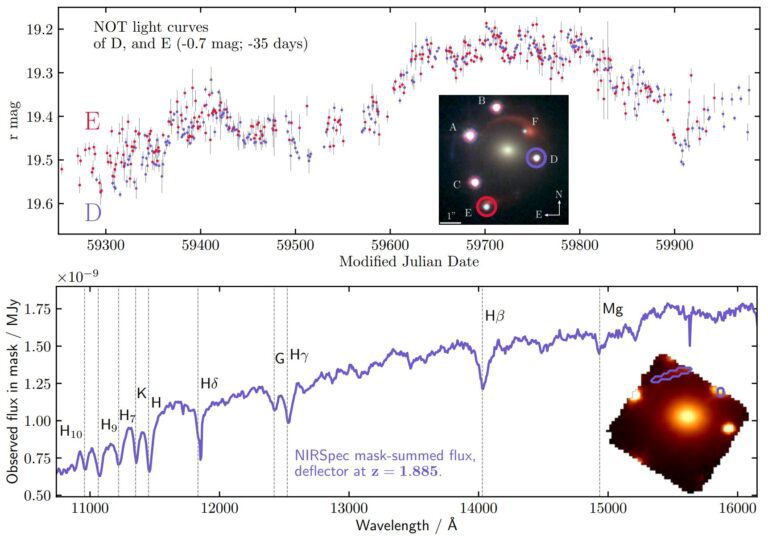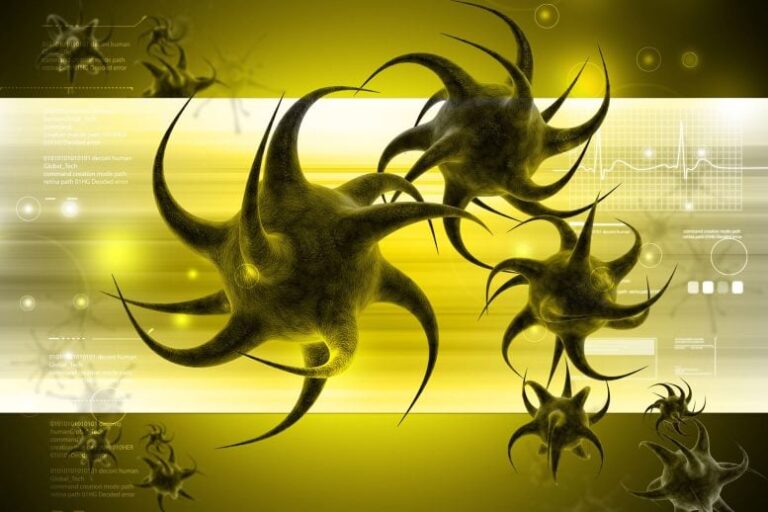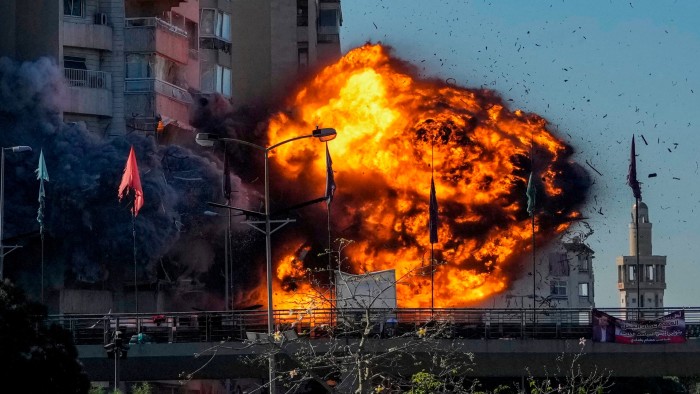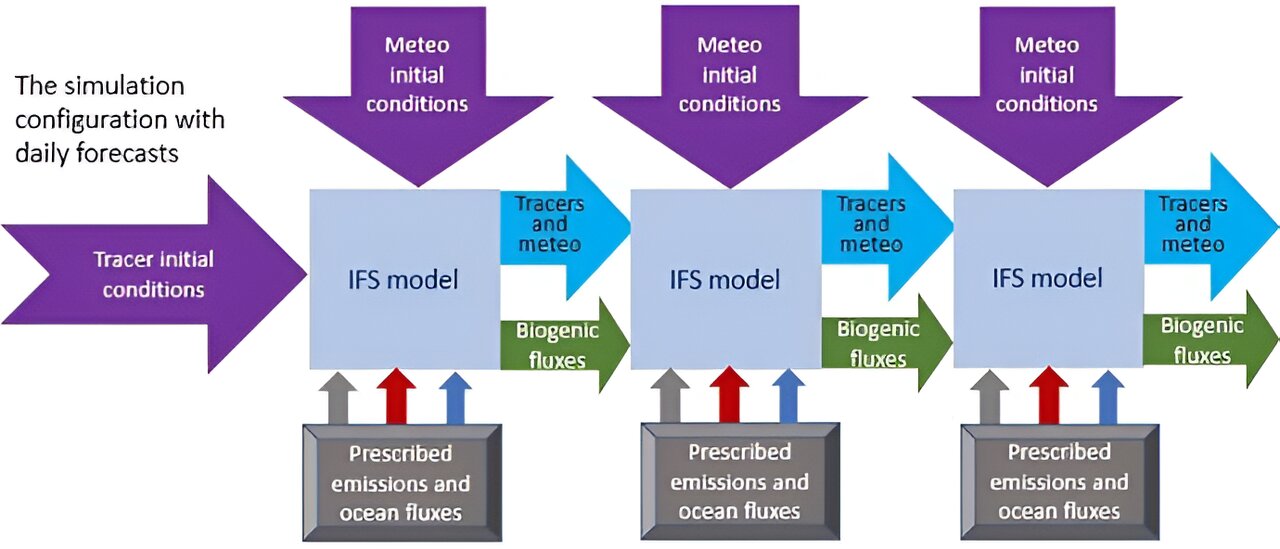
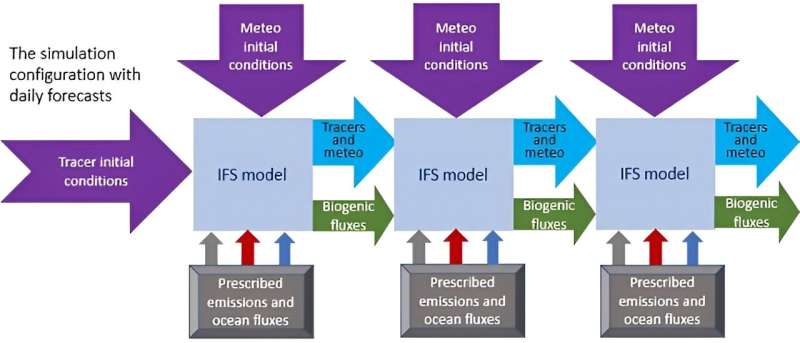
Three videos developed as part of the CoCO2 research project coordinated by ECMWF show a “nature run” of greenhouse gases over the year 2021.
CoCO2 ended in December 2023, but the videos of the evolution of methane (CH4), carbon monoxide (CO), and carbon dioxide (CO2) in the atmosphere have only just become available.
In these nature runs, the greenhouse gases evolve from realistic starting conditions and are subject to daily updates of emissions as well as weather conditions. However, they do not include any input from observations of the gases.
Such nature runs are useful for a lot of scientific studies. For example, in CoCO2 they were used to assess the impact of different types of satellites.
“Nature runs are more physically consistent than a reanalysis, which also uses observations of gases, because they avoid steps in the modeled evolution,” says ECMWF scientist Anna Agustí-Panareda. “They are also much faster to produce at high resolution than a reanalysis.”
Methane
High values of CH4 can be seen in particular south of the Himalayas, in southeast Asia, and in the region of the Amazon river in South America. This is mainly the result of emissions from wetlands; agriculture, including livestock; and fossil fuel extraction. The Himalayas act as a barrier to the dispersion of methane.
More generally, the presence of CH4 is higher in the northern hemisphere than in the southern hemisphere. This can be attributed to the fact that total CH4 emissions are greater in the north than in the south.
Carbon monoxide
The presence of CO is dominated by biomass burning, wildfires and fossil fuel emissions. The latter are important for example in south-east Asia. Wildfires are extreme in late July and early August over Siberia, with the resulting CO emissions covering almost the entire Arctic region.
Carbon dioxide
The amount of CO2 in the atmosphere depends very much on the season, and it also increases noticeably throughout the year: more is present at the end of 2021 than at the beginning.
The seasonal effect is mainly due to vegetation, but there is generally also a strong component from biomass burning and wildfires as well as fossil fuel.
“These nature runs have multiple uses,” says Richard Engelen, the Deputy Director of the EU’s Copernicus Atmosphere Monitoring Service (CAMS), implemented by ECMWF. “In CoCO2 they were used to look at the impact of future CO2 and CH4 observations, but they can also provide boundary conditions for local or regional studies, and they can be used to assess the sub-grid-scale variability of global models that are used at lower spatial resolution.”
“In addition, they make it very visible what a satellite would observe at any moment of the year, and how observing multiple species can provide more insights into, for instance, the effects of wildfires on atmospheric concentrations.”
CoCO2 will help CAMS to develop an operational anthropogenic greenhouse gas emissions Monitoring and Verification Support Capacity (CO2MVS).
CORSO is looking at how information on CO2 emissions can be obtained by observing other emitted species, and CATRINE will improve the numerical aspects and evaluation of the transport of atmospheric tracers, with an emphasis on long-lived greenhouse gases.
CO2MVS is expected to be up and running by 2026.
Provided by
European Centre for Medium-Range Weather Forecasts (ECMWF)
Citation:
Videos show ‘nature run’ of greenhouse gases over a year (2024, May 29)
retrieved 30 May 2024
from https://phys.org/news/2024-05-videos-nature-greenhouse-gases-year.html
This document is subject to copyright. Apart from any fair dealing for the purpose of private study or research, no
part may be reproduced without the written permission. The content is provided for information purposes only.

